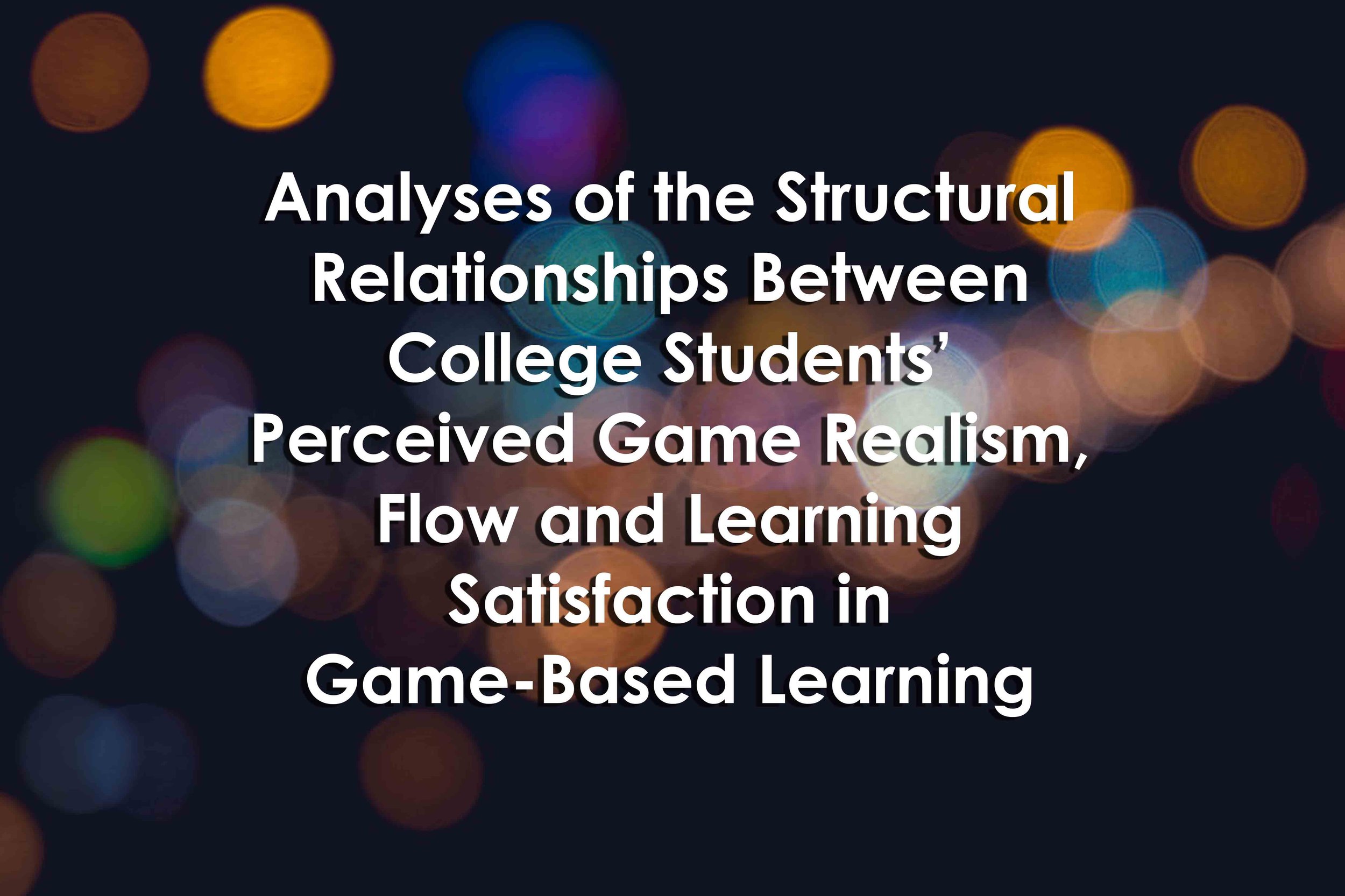Analyses of the Structural Relationships Between College Students’ Perceived Game Realism, Flow and Learning Satisfaction in Game-Based Learning
Analyses of the Structural Relationships Between College Students’ Perceived Game Realism, Flow and Learning Satisfaction in Game-Based Learning
Analyses of the Structural Relationships Between College Students’ Perceived Game Realism, Flow and Learning Satisfaction in Game-Based Learning
By Jungeun Hur and Keol Lim
Abstract
“Perceived game realism (PGR) has recently emerged as a key concept in explaining the mental processing of digital game playing and the societal impact of digital games. However, few studies have examined its conceptualization and educational effects from an empirical viewpoint, especially in educational games. This study's participants included 292 university students in South Korea. They learned English expressions using a computer-based educational game and then completed questionnaires on the research variables. We investigated six factors of PGR: simulational realism (SIR), freedom of choice (FRC), perceptual pervasiveness (PEP), social realism (SOR), authenticity (AUT), and character involvement (CAI). We expected the factors to have valid effects on the university students' flow and learning satisfaction after a game-based learning (GBL) experience. Our research results demonstrated a causal relationship between SIR, FRC, CAI, and learning satisfaction. Furthermore, the indirect effects of SIR and CAI on learning satisfaction through flow were statistically significant.”
Reference
Hur, J., & Lim, K. (2021). Analyses of the structural relationships between college students' perceived game realism, flow and learning satisfaction in game-based learning. Retrieved March 3, 2022, from https://kset.or.kr:5003/eti_ojs/index.php/instruction/article/view/211
Keywords
Perceived game realism, game-based learning, flow, learning satisfaction, research

